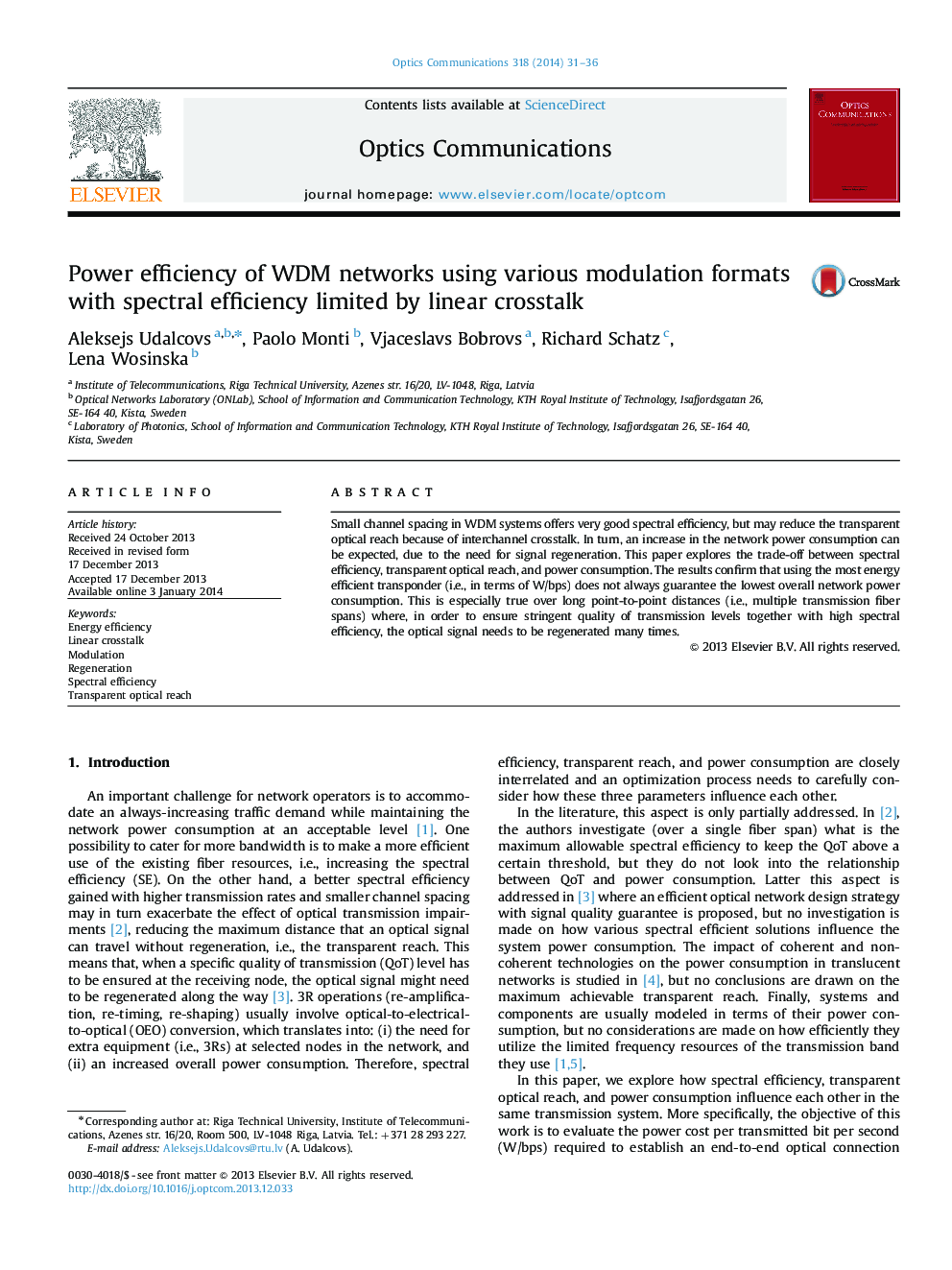| Article ID | Journal | Published Year | Pages | File Type |
|---|---|---|---|---|
| 1534930 | Optics Communications | 2014 | 6 Pages |
Small channel spacing in WDM systems offers very good spectral efficiency, but may reduce the transparent optical reach because of interchannel crosstalk. In turn, an increase in the network power consumption can be expected, due to the need for signal regeneration. This paper explores the trade-off between spectral efficiency, transparent optical reach, and power consumption. The results confirm that using the most energy efficient transponder (i.e., in terms of W/bps) does not always guarantee the lowest overall network power consumption. This is especially true over long point-to-point distances (i.e., multiple transmission fiber spans) where, in order to ensure stringent quality of transmission levels together with high spectral efficiency, the optical signal needs to be regenerated many times.
